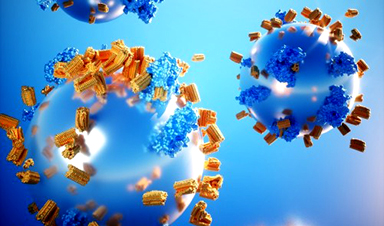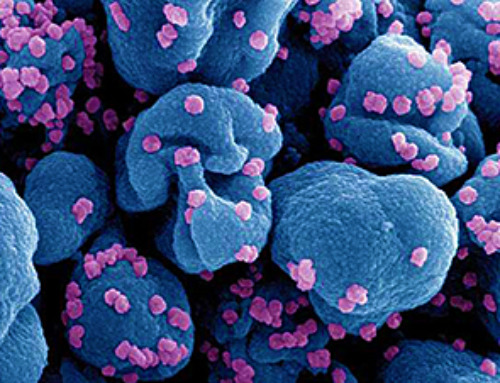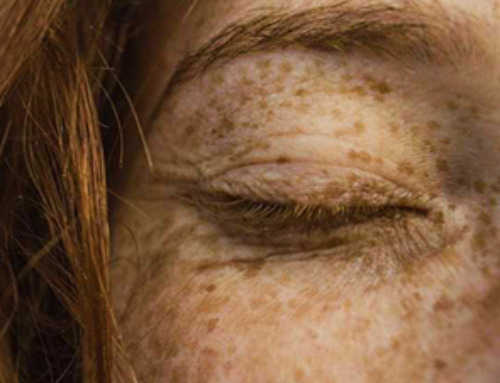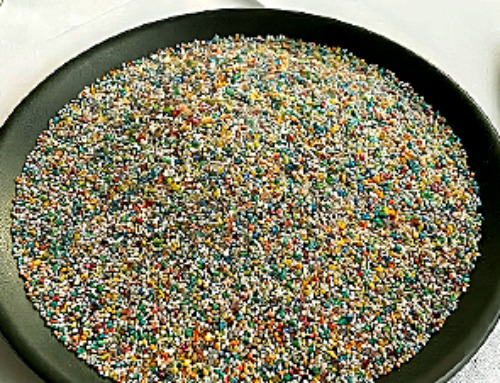| University of Minnesota Twin Cities researchers have developed a groundbreaking new diagnostic technique that will allow for faster and more accurate detection of neurodegenerative diseases. The method will likely open a door for earlier treatment and mitigation of various diseases that affect humans, such as Alzheimer’s and Parkinson’s, and similar diseases that affect animals, such as chronic wasting disease (CWD). | |
| Their new study is published in Nano Letters (“Nanoparticle-Enhanced RT-QuIC (Nano-QuIC) Diagnostic Assay for Misfolded Proteins”). | |
| “This paper mainly focuses on chronic wasting disease in deer, but ultimately our goal is to expand the technology for a broad spectrum of neurodegenerative diseases, Alzheimer’s and Parkinson’s being the two main targets,” said Sang-Hyun Oh, senior co-author of the paper and a Distinguished McKnight University Professor in the University of Minnesota Department of Electrical and Computer Engineering. “Our vision is to develop ultra-sensitive, powerful diagnostic techniques for a variety of neurodegenerative diseases so that we can detect biomarkers early on, perhaps allowing more time for the deployment of therapeutic agents that can slow down the disease progression. We want to help improve the lives of millions of people affected by neurodegenerative diseases.” | |
| Neurodegenerative diseases such as Alzheimer’s, Parkinson’s, mad cow disease, and CWD (widely found in deer) share a common feature—the buildup of misfolded proteins in the central nervous system. Detecting these misfolded proteins is crucial for understanding and diagnosing these devastating disorders. However, existing diagnostic methods, like enzyme-linked immunosorbent assay and immunohistochemistry, can be expensive, time-consuming, and limiting in terms of antibody specificity. | |
| The University of Minnesota researchers’ method, dubbed Nano-QuIC (Nanoparticle-enhanced Quaking-Induced Conversion), significantly improves the performance of advanced protein-misfolding detection methods, such as the NIH Rocky Mountain Laboratories’ Real-Time Quaking-Induced Conversion (RT-QuIC) assay. | |
| The RT-QuIC method involves shaking a mixture of normal proteins with a small amount of misfolded protein, triggering a chain reaction that causes the proteins to multiply and allowing for the detection of these irregular proteins. Using tissue samples from deer, the University of Minnesota team demonstrated that adding 50-nanometer silica nanoparticles to RT-QuIC experiments dramatically reduces detection times from about 14 hours to only four hours and increases the sensitivity by a factor of 10. | |
| A typical 14-hour detection cycle means that a lab technician can run only one test per normal working day. However, with a detection time of less than four hours, researchers can now run three or even four tests per day. | |
| Having a quicker and highly accurate detection method is particularly important for understanding and controlling transmission of CWD, a disease that is spreading in deer across North America, Scandinavia, and South Korea. The researchers believe that Nano-QuIC could eventually prove useful for detecting protein-misfolding diseases in humans, specifically Parkinson’s, Creutzfeldt-Jakob Disease, Alzheimer’s, and ALS. | |
| “Testing for these neurodegenerative diseases in both animals and humans has been a major challenge to our society,” said Peter Larsen, senior co-author of the paper and an assistant professor in the University of Minnesota Department of Veterinary and Biomedical Sciences. “What we’re seeing now is this really exciting time when new, next generation diagnostic tests are emerging for these diseases. The impact that our research has is that it’s greatly improving upon those next generation tests, it’s making them more sensitive, and it’s making them more accessible.” |
News
Older chemical libraries show promise for fighting resistant strains of COVID-19 virus
SARS‑CoV‑2, the virus that causes COVID-19, continues to mutate, with some newer strains becoming less responsive to current antiviral treatments like Paxlovid. Now, University of California San Diego scientists and an international team of [...]
Lower doses of immunotherapy for skin cancer give better results, study suggests
According to a new study, lower doses of approved immunotherapy for malignant melanoma can give better results against tumors, while reducing side effects. This is reported by researchers at Karolinska Institutet in the Journal of the National [...]
Researchers highlight five pathways through which microplastics can harm the brain
Microplastics could be fueling neurodegenerative diseases like Alzheimer's and Parkinson's, with a new study highlighting five ways microplastics can trigger inflammation and damage in the brain. More than 57 million people live with dementia, [...]
Tiny Metal Nanodots Obliterate Cancer Cells While Largely Sparing Healthy Tissue
Scientists have developed tiny metal-oxide particles that push cancer cells past their stress limits while sparing healthy tissue. An international team led by RMIT University has developed tiny particles called nanodots, crafted from a metallic compound, [...]
Gold Nanoclusters Could Supercharge Quantum Computers
Researchers found that gold “super atoms” can behave like the atoms in top-tier quantum systems—only far easier to scale. These tiny clusters can be customized at the molecular level, offering a powerful, tunable foundation [...]
A single shot of HPV vaccine may be enough to fight cervical cancer, study finds
WASHINGTON -- A single HPV vaccination appears just as effective as two doses at preventing the viral infection that causes cervical cancer, researchers reported Wednesday. HPV, or human papillomavirus, is very common and spread [...]
New technique overcomes technological barrier in 3D brain imaging
Scientists at the Swiss Light Source SLS have succeeded in mapping a piece of brain tissue in 3D at unprecedented resolution using X-rays, non-destructively. The breakthrough overcomes a long-standing technological barrier that had limited [...]
Scientists Uncover Hidden Blood Pattern in Long COVID
Researchers found persistent microclot and NET structures in Long COVID blood that may explain long-lasting symptoms. Researchers examining Long COVID have identified a structural connection between circulating microclots and neutrophil extracellular traps (NETs). The [...]
This Cellular Trick Helps Cancer Spread, but Could Also Stop It
Groups of normal cbiells can sense far into their surroundings, helping explain cancer cell migration. Understanding this ability could lead to new ways to limit tumor spread. The tale of the princess and the [...]
New mRNA therapy targets drug-resistant pneumonia
Bacteria that multiply on surfaces are a major headache in health care when they gain a foothold on, for example, implants or in catheters. Researchers at Chalmers University of Technology in Sweden have found [...]
Current Heart Health Guidelines Are Failing To Catch a Deadly Genetic Killer
New research reveals that standard screening misses most people with a common inherited cholesterol disorder. A Mayo Clinic study reports that current genetic screening guidelines overlook most people who have familial hypercholesterolemia, an inherited disorder that [...]
Scientists Identify the Evolutionary “Purpose” of Consciousness
Summary: Researchers at Ruhr University Bochum explore why consciousness evolved and why different species developed it in distinct ways. By comparing humans with birds, they show that complex awareness may arise through different neural architectures yet [...]
Novel mRNA therapy curbs antibiotic-resistant infections in preclinical lung models
Researchers at the Icahn School of Medicine at Mount Sinai and collaborators have reported early success with a novel mRNA-based therapy designed to combat antibiotic-resistant bacteria. The findings, published in Nature Biotechnology, show that in [...]
New skin-permeable polymer delivers insulin without needles
A breakthrough zwitterionic polymer slips through the skin’s toughest barriers, carrying insulin deep into tissue and normalizing blood sugar, offering patients a painless alternative to daily injections. A recent study published in the journal Nature examines [...]
Multifunctional Nanogels: A Breakthrough in Antibacterial Strategies
Antibiotic resistance is a growing concern - from human health to crop survival. A new study successfully uses nanogels to target and almost entirely inhibit the bacteria P. Aeruginosa. Recently published in Angewandte Chemie, the study [...]
Nanoflowers rejuvenate old and damaged human cells by replacing their mitochondria
Biomedical researchers at Texas A&M University may have discovered a way to stop or even reverse the decline of cellular energy production—a finding that could have revolutionary effects across medicine. Dr. Akhilesh K. Gaharwar [...]





















